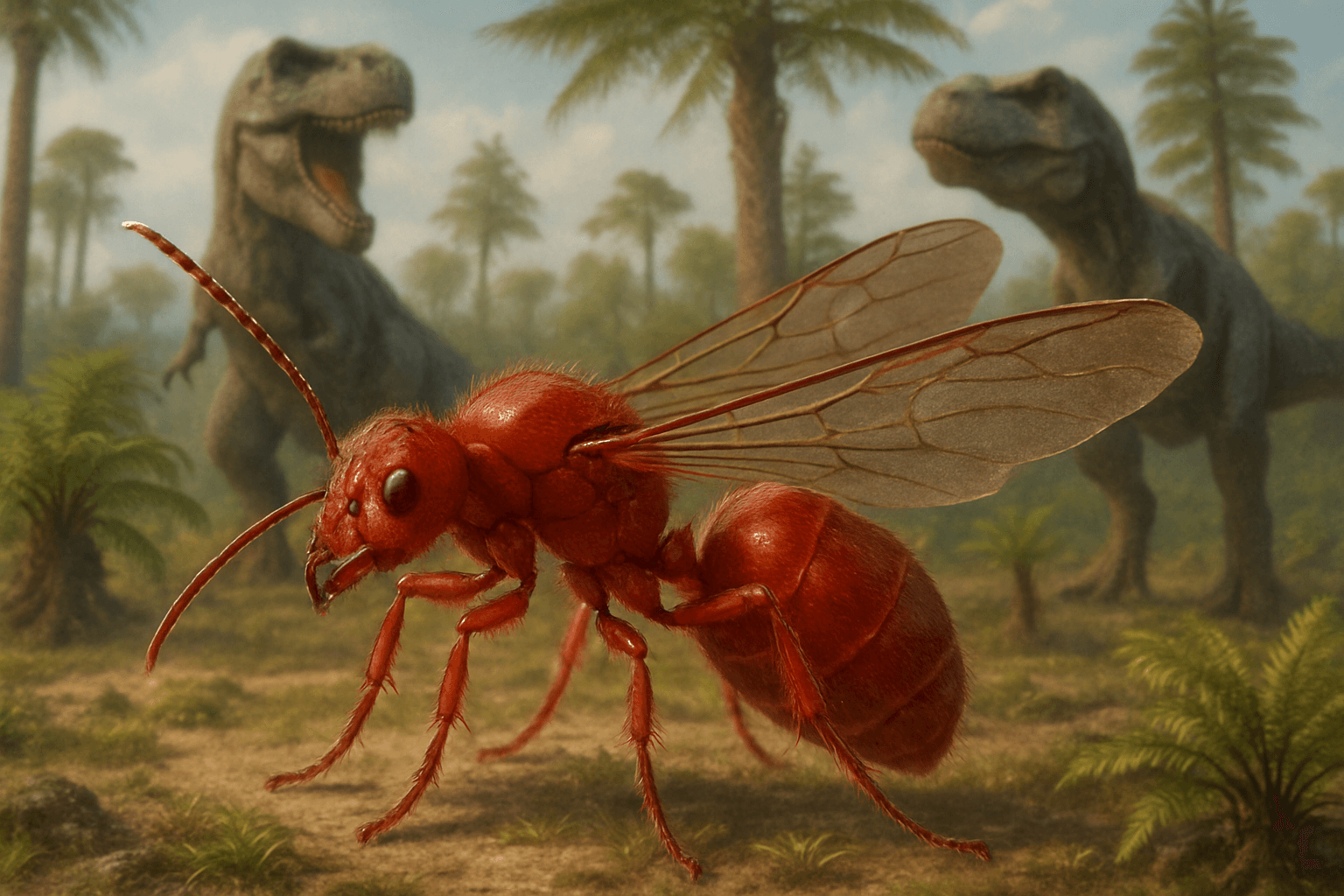The world's oldest ant fossil preserved within a 113-million-year-old lump of limestone has been unearthed in a long-forgotten museum collection.
Biologists at Sao Paulo University's Zoology Museum have revealed what is now said to be the oldest ant known to science in a study in the journal Current Biology.
The fearsome-looking ant, a member of the Haidomyrmecinae genus, lived in the Cretaceous period surrounded by dinosaur giants like the T-Rex, Triceratops and Velociraptor.
Its name comes from the fearsome-looking, sickle-like jaws the insect used to spear its prey.
The ant was apparently found during a re-examination of an existing fossil collection, which had been gathering dust in a drawer.

Picture shows Haidomyrmecinae fossil, undated. The oldest ant ever discovered found fossilized in Brazil. Note: CC BY-SA. (Anderson Lepeco/Newsflash/NX)
One of the study authors, Anderson Lepeco, confirmed that it was the oldest geological record of ants.
He said: "What makes this discovery particularly interesting is that it belongs to the extinct 'hell ant', known for its bizarre predatory adaptations.
"Despite belonging to an ancient lineage, this species already had highly specialised anatomical characteristics, suggesting unique hunting behaviours.”
The researchers say that the fossil challenges the current science on the geographical location where the insect evolved.
Other specimens have been found in France and Burma, preserved in amber.
Now, says the paper, this hell ant found in Brazil has demonstrated that the species was already widely distributed and diversifying as far back as 113 million years ago.

A paleoartistic reconstruction of the new species, based on the fossil and on a close relative species found in amber from Myanmar. The oldest ant ever discovered found fossilized in Brazil. Note: CC BY-SA. (Diego M. Matielo/Newsflash/NX)
Lepeco explained: "Although hell ants have already been discovered in amber, this is the first time we have been able to visualise this in a rock fossil."
He added: "This discovery highlights the importance of closely examining existing collections—private and museum -and sheds light on Brazilian palaeontology and the country’s underexplored fossil insect fauna.”
The study was published in the Current Biology journal on 24th April.
(Joseph Golder/newsX)

